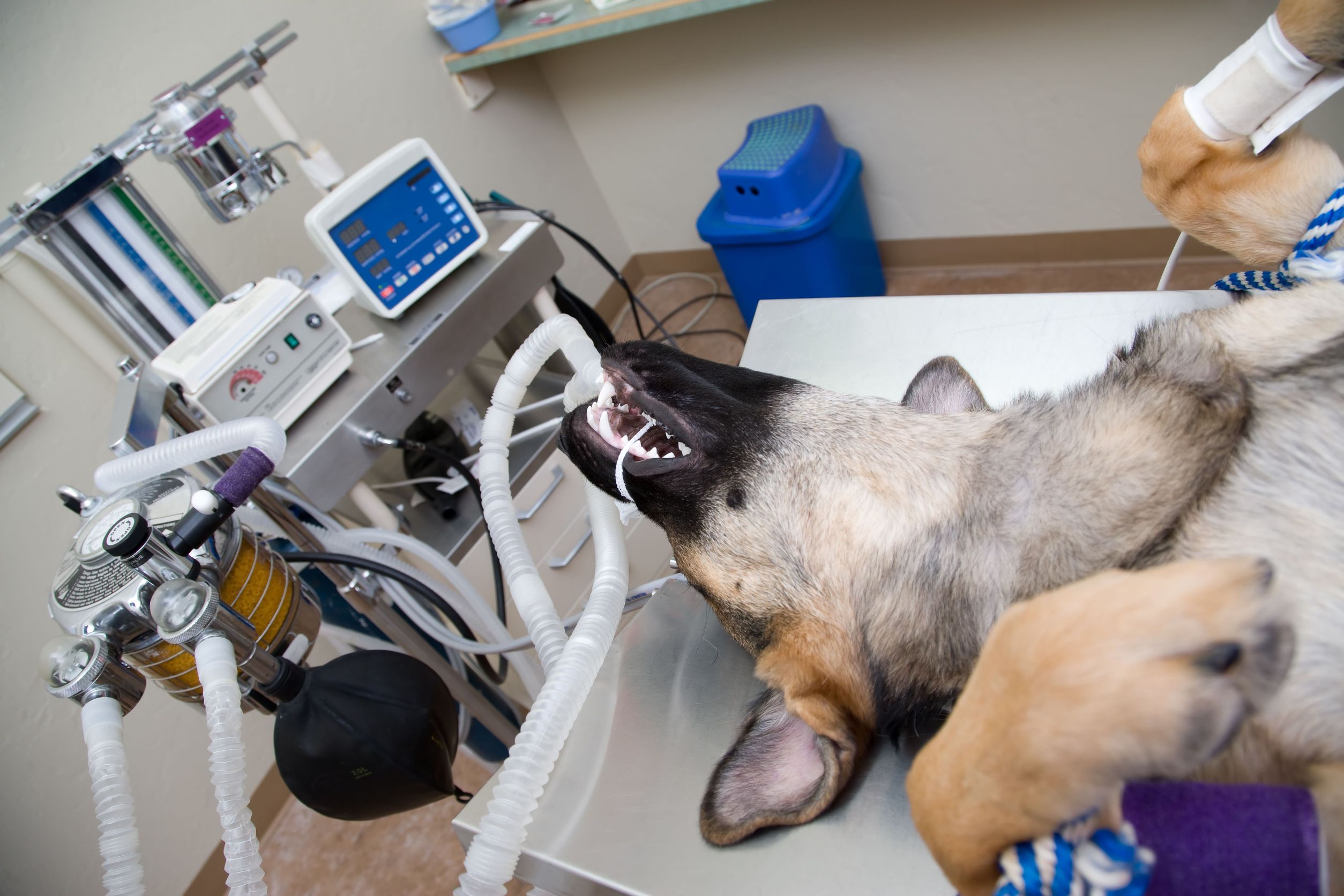Bloating or Gastric Dilation and Volvulus in dogs is always a medical emergency. As much as one-third of all dogs who suffer a bloating attack will die within hours. Always keep the phone number to an emergency Dog Clinic in Lenexa KS and elsewhere as well as the phone number to the dog’s regular vet by the phone, in the dog’s first aid kit, in the glove compartment or anywhere the numbers can be quickly retrieved.
Dogs Most Prone to Bloat
Dogs with deep chests and narrow or wasp waists are most prone to bloat. However, large breeds with deep chests are also prone to bloat. The top ten breeds that suffer bloat the most are the Great Dane, the Saint Bernard, the Weimaraner, the Irish Setter, the Gordon Setter, the Standard Poodle, the Bassett Hound, the Doberman Pinscher, the Old English Sheepdog and the German Shorthaired Pointer. Boxers, German Shepherds, and even Dachshunds have also been known to bloat. For an unknown reason, dogs over 7 are more prone to bloat than younger dogs. Older dogs of susceptible breeds or body build must be carefully watched after they eat for any signs of bloating.
Signs of Bloating
Signs of bloating include a sudden swelling of the belly and gagging without bringing anything up. Since this is a painful condition the dog will show signs of pain such as constant moving about, panting and drooling. If left alone, the dog soon goes into shock and dies. At the first signs of bloating, call a vet or emergency Dog Clinic in Lenexa KS and elsewhere to let them know the dog is coming. Get the dog to the clinic as soon as possible. Any delay can be lethal.
Preventing Bloating
Dogs fed only once a day bloat far more often than those fed two or three meals a day. This is because dogs fed once a day often bolt their food instead of eating at a more sedate pace. Place food and water bowls on stands so the dog does not have to bend far down in order to eat. Never exercise a dog within an hour of eating a meal as this can often cause bloat.
Like colic in horses, bloat in dogs can be lethal. Visit the Website to find out more about dog emergency care.
You can also follow them on Twitter.

